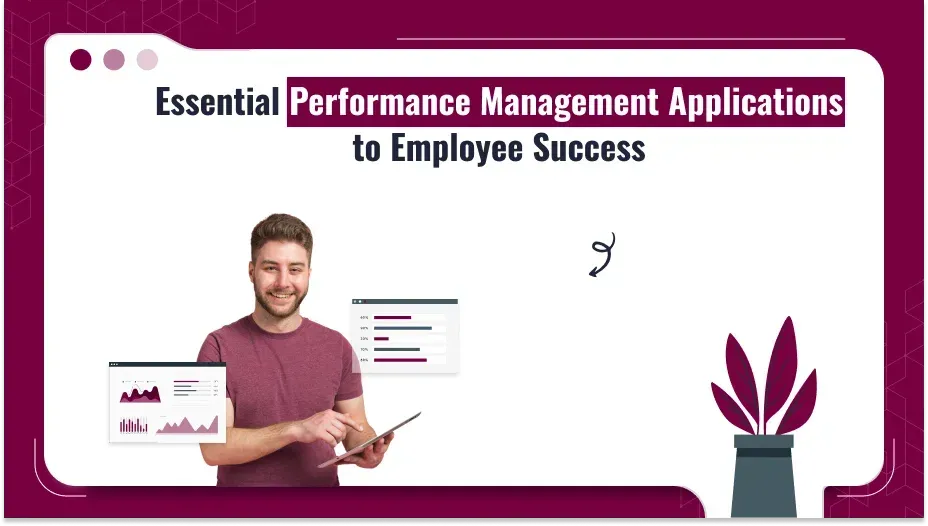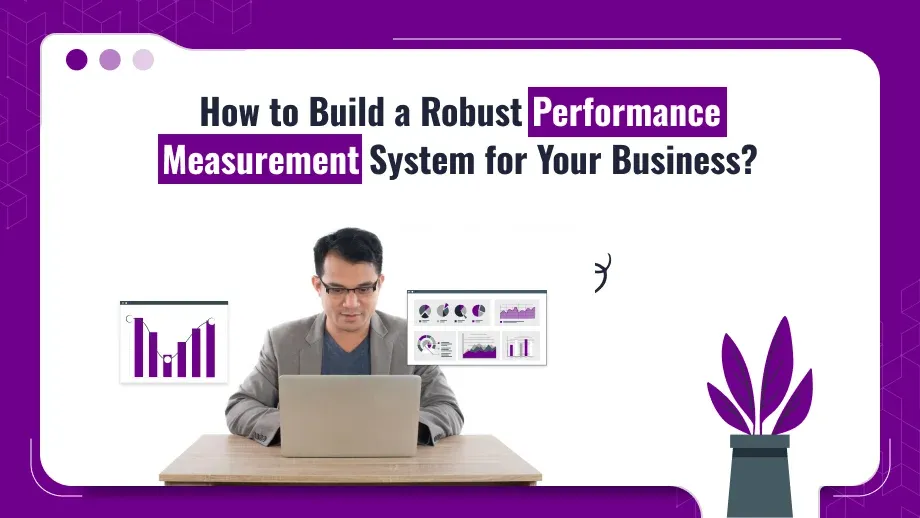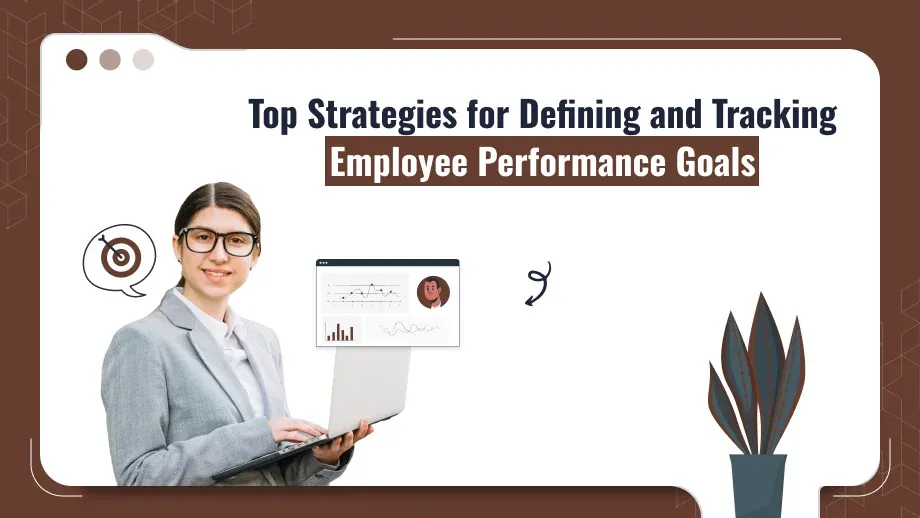
This is significant for any organization aiming at the pursuit of competitiveness in today’s fast-paced business environment. Performance management applications are critical enablers of such processes. Through performance management tools, organizations can evaluate, monitor, and enhance employees’ performances. Therefore, the tools provide effective ways to align individual goals with higher-level business objectives, promote employee engagement, and enhance continuous development.
We will discuss here the concept of performance management applications, key features, benefits, best practices to implement, and how these might revolutionize the workforce management within organizations.
What Are Performance Management Applications?
Performance management applications are such software solutions that are designed to help any organization manage the entire performance cycle with an employee. It simplifies the goal-setting and allows continuous feedback, performance reviews, and even every feature of employee development. The digitization of the process of performance management saves large amounts of time for companies and reduces the administrative burden, providing insights into workforce productivity in real-time.
With proper application performance management software, an organized, repeated employee-performance approach can be created for any organization, and therefore, a way to gaining individual and organizational success.
Key Features of Performance Management Applications
1. Goal Setting and Alignment
An important advantage of performance management applications is that they can set and track goals. Employees and managers can work together to set SMART (Specific, Measurable, Achievable, Relevant, Time-bound) goals so that individual objectives reflect the company’s strategic direction at large. These applications further feature in real-time tracking that keeps employees focused on objectives while enabling managers to monitor its progress.
Third, performance management applications facilitate a higher degree of linkage between an individual’s objectives and larger organizational outcomes. Wherever employees feel they understand how their work supports the purpose of the organization, they are further motivated and involved.
2. Continuous Feedback
Most traditional performance reviews take place at the annual checkup, which can prevent many of these employees from receiving constructive input in a timely manner. Performance management applications encourage continuous feedback, meaning every employee can receive constructive input throughout the entire year. Managers will use these platforms for constant coaching; they’ll approve a few accomplishments; and they’ll bring employees in on topics about which they need to make improvements once they occur.
Feedback is a central element of today’s rapid work scenario. The old waits and depends on annual review for the assessment of their performance are a thing of the past, promoting continuous improvement and prompt rectification in nature.
3. Appraisal/Reviews of Performance
Performance management applications allow for a more objective and consistent way of conducting performance reviews. These applications allow managers to monitor many performance-related data points over time, conduct 360-degree feedback, and produce comprehensive reports. The upshot is that the process of performance review is much fairer and transparent and in which employees really know what they are being rated for.
Apart from these annual appraisals, these systems provide for check-in and review regularly that ensures performance is constantly checked and problems identified and brought on the right time.
4. Employee Development Plans
Performance management applications then find their application in employee growth through employee development plans. These plans help organizations identify areas of skills deficit, provide learning resources, and tailoring the development plans suited to specific needs for employees. Continuous development can then lead to increased employee satisfaction and retention.
Through such applications, managers can trace an employee’s progress against the employee development plan which guarantees proper support, training, and mentorship for advancement in work.
Unlock the full potential of your team with our performance management applications.
Schedule a consultation to learn how!
5. Data Analytics and Reporting
Some of the key advantages for using application performance management and monitoring tools include data-driven insights. The applications offer powerful analytics tools that help organizations measure workforce trends, high performers, and have an overall way of checking the effectiveness of the performance management system. With all this, organizations can use these insights in making data-driven decisions that subsequently improve both individual and company performance.
The use of data analytics in applications related to performance management allows businesses to understand the patterns and trends that may require further resource allocation or areas where staff training is required. By having such an all-encompassing view of performance, better decisions are made.
In many cases, performance management applications integrate with payroll, attendance, and other employee engagement platforms. An integrated process best enables organizations to get better information on compensation, promotions, and maintaining employee welfare.
application performance management software can integrate with other HR systems, providing a fully comprehensive and streamlined way of managing an employee’s life cycle from recruitment to retirement.
Benefits of Performance Management Applications
Increased Efficiency
It will help save the time of managers and HR teams spent on administrative functions by automating performance management processes. With the use of performance management applications, all the tracking of goals through suggestions and ultimately offering the feedback are performed through the computer, and thus there is no paperwork or activities streamlined. Thus, this leaves time from the manager’s schedule to offer coaching and support for the team.
Through the automation of performance management data, human error is also minimized because everything is always accurate at the fingertips.
Novel Employee Engagement
Feedback and goal alignment are important because they establish the culture of continuous development, that therefore boosts the level of employee engagement. If employees know where they are and what they have to do to succeed, they are more likely to be motivated and concerned about the success of their position. Performance management applications provide the means whereby employees have recognition for their successes, which acts to keep them engaged and focused on company goals.
Engaged workers are likely to stay longer with the organization. This would result in higher retention levels and, at the same time, reduce recruitment costs.
Greater Accountability
The performance management applications make employees and managers accountable for the outcome of performance. Employees tend to take their responsibilities seriously, and managers have in their hand the tools to track or address performance problems in time. Additionally, these applications leave a history of documented performance to notice patterns or recurring concerns that need attention.
The transparency in performance management in HRM allows for accountability at each level, leading to higher standards of performance across board.
Objective and Fair Evaluations
In that it tracks performance metrics over time, such applications reduce the possible subjectivities that often shroud performance reviews. Data-driven evaluations ensure fairness and consistency in an organization, thus leading to increased trust in the performance management system.
It will lead to fairer assessments and more equitable rewards with data rather than judgment. Equal benefits to the employees for fairer assessment will be done with the help of automated tracking and analytics.
Better Employee Retention
Employees who are supported in a proper way and have an exit for development will stay longer. Using a performance management application, managers can determine the development needs of employees. Thus, for their increased job satisfaction, employee turnover will be reduced.
Retaining top performers is the prime objective of an effective performance management system, and performance management applications provide the tools to achieve that.
Alignment with Organizational Goals
Performance management applications ensure that individual goals are aligned with the general organizational objectives. This alignment ensures that the companies keep their efforts concerted, ensuring all employees are working toward the same strategic priorities. It makes everyone remain on the same page and pushes overall business success.
Companies whose goals are well aligned show a much higher coherence among teams, productivity, and key focus on business outcomes.
Best Practices for Implementing Performance Management Applications
Define Clear Performance Objectives
For maximum utilization of performance management applications, clear performance objectives must be defined for employees. Performance objectives for an employee must overlap with the broader organizational strategy devised by managers. Setting SMART goals (Specific, Measurable, Achievable, Relevant, Time-bound) is a practical way in which it can be guaranteed that the employees know precisely what is expected from them.
Facilitate continuous feedback
One of the most potent means of getting the best performance from employees is regular feedback. Use performance management applications for continual two-way conversations between managers and employees. Make giving and receiving part of daily workflow, rather than keeping it strictly for formal review periods.
The importance of ongoing feedback results in the maintenance of employees’ motivation, keeps them on track toward their goal, and makes adjustments when needed.
Train your managers and employees on the system
After all, training is the key to having the performance management applications adopted really well. Training ensures that managers and employees know how to set and track goals, follow and provide feedback about progress, what features of the system are helpful, and what’s not. Proper training ensures everyone is knowledgeable and always maximizes the benefits of the system.
Implement Integration with Other HR Systems
This ensures your performance management application works harmoniously with other human resource tools like payroll and employee engagement systems, ensuring the process will be smooth, and the better practice of application performance management software will ensue. Sharing of performance data across different platforms ensures that each person’s view is complete.
Always review and update the system
Performance management is a continuous process. And so, the system you will adopt should grow with the needs of your organization. Continuously review the performance management application to ensure it serves its objectives. Seek feedback from both managers and employees and have such preparatory adjustments on features or processes that will keep the system effective and relevant.
Choosing the Right Application for Performance Management
No doubt one of the most important selections of performance management software for your organisation. The following factors should guide the key selection decision:
Ease of Use
The application should be intuitive and easy to use. A complicated interface leads to low adoption rates and resistance from employees and managers.
Customization
For every organization, there exists a specific need for performance management, so the application must be very customizable to adjust according to the firm’s performance objectives, processes, and culture.
Integration Capability
Use the application that is integrated with all your existing HR systems to ensure the information is exchanged without any sort of hassle, thus offering a seamless flow from different platforms and lowering the burden of using multiple systems.
Scalability
As your organization grows so should your performance management. Ensure that the application you choose has scalability to support a more significant workforce and additional capabilities where necessary.
Support and Training
Choose a vendor that offer you support and training for your implementation team so that it utilizes the application extensively.
Updates as well as customer support must be constantly provided to help keep the system running without hitches.
Conclusion
The competitive environment has made performance management applications a imperative tool to make employees successful and help usher the growth of organizations. Performance management applications enable organizations to align their individual and company goals, offer continuous feedback and support employee development by automating and streamlining the processes of performance management With the performance management application features such as goal tracking, performance reviews, and analytics, businesses can make data-based decisions so as to create a responsible and learning organization.
Therefore, application performance management and monitoring and monitoring tool becomes not an option but a necessity for organizations looking to stay ahead of the curve. Select the right tool for your business, and your workforce will prosper.






